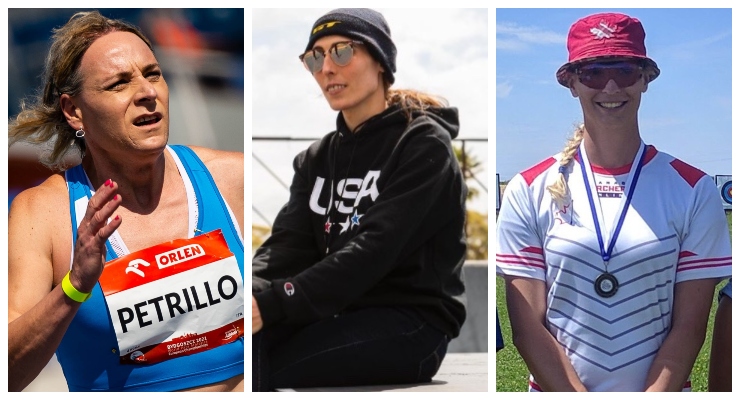When the Tokyo Olympics begin in earnest tomorrow, the eyes of the world will be on one of the members of the New Zealand weightlifting team, Laurel Hubbard. The 43-year-old transgender athlete, currently ranked 15th in the super heavyweight category, will be the first transwoman (male-born person) to be selected to compete against women in the female category.
Hubbard, who transitioned in 2011, will join fellow trans-identified male athletes Chelsea Wolfe (freestyle BMX for the USA), Stephanie Barrett (archery for Canada) and Valentina Petrillo (Italian Paralympic sprinter) on the women’s teams.
For the past 125 years, men and women have competed separately at the Olympic Games. Olympic Games organisers and society as a whole has deemed this necessary to enable female athletes to have safe and fair opportunities for success.
As Helen Joyce writes in her bestselling book Trans: When Ideology Meets Reality, because women’s bodies were designed for childbirth, they have less stable hips and a less efficient gait than men. In addition, the average adult man has 41% more non-fat body mass, 50% more muscle mass in his legs, and 75% more in his arms than the average adult woman.
In 2015, the International Olympic Committee (IOC) announced that any male athlete could compete as a woman provided their testosterone levels were below 10 nanomoles per litre for at least 12 months before their first competition. Hubbard met those standards. But 10 nanomoles per litre is still many times higher than the average biological woman.
Performance enhancer
As disgraced former cycling champion Lance Armstrong knows only too well, testosterone is a very efficient performance-enhancing hormone.
Over the past few years, there has been a rise in the number of people who believe that “sex is a spectrum” and that the notion of the male/female sex binary is “outdated”.
They would like to replace the concept of biological sex with the nebulous concept of “gender identity”. Yet 99.98% of human beings are born unambiguously, immutably and observably male or female, and the material reality of being born into a male or female sexed body cannot be overridden by internal and subjective feelings about gender.
Pitting sex against gender identity in sports policies has caused a collision of incompatible, competing rights. In the name of inclusion, however, international and national sports authorities and organisations are allowing transgender athletes to compete in the category that is the opposite of the sex they were born. Nobody wants to be seen as failing to play along with this notion of progressivism, nobody wants to be accused of failing to demonstrate sufficient allegiance, but nobody is stopping to think about what “inclusion” actually means.
When males are included in the female category, what happens to the women and girls? They miss a spot on the team, they self-exclude, they are withdrawn by their parents, they are silenced if they resist, they lose out on the opportunity for prizes and scholarships and are threatened with loss of sponsorship. Inclusion really means exclusion for women and girls.
A new consensus
The IOC released a new Consensus on Sex Reassignment and Hyperandrogenism in 2015. Committee panellist Dr Joanna Harper, a sports transactivist and medical physicist specialising in oncology radiation, supplied a methodologically flawed, self-reported survey of eight non-elite athletes as “evidence” for justifying altering eligibility for the female category.
On the basis of this scientifically dubious paper, the female category was made “open” as biological males declaring “female gender identity” and reducing testosterone to a level four to 20 times higher than that of biological females were now allowed to compete alongside women and girls.
A year later, committee panellists acknowledged a “paucity of evidence” on this issue, and despite the consensus itself stating that it is a living document subject to emerging evidence, the IOC has chosen to ignore recent research, including by Dr Harper, that determines a reduction of testosterone (obviously) does not mitigate the male performance advantage.
It is extraordinarily naive or wilfully ignorant of the IOC to trust that this will not be exploited by any athlete or nation seeking to gain even the slightest competitive advantage. Hubbard, Wolfe and Barrett are not technically cheating, they are not breaking any rules, but when male-born transgender athletes are allowed to compete with women it is clear that the rules themselves are broken.
Due to their androgenised bodies, biological males have substantial and observable performance advantages that are simply insurmountable for a female of comparative age, size and training.
When boys hit mid-teens, the differences between the sexes become acute and their performances begin to surpass those of the most elite females. Allyson Felix, the fastest woman in the world, is annually beaten by 15,000 men and boys. The world champion US women’s soccer team were beaten by under-15 schoolboys 5-2, as were the Australian Matildas by under-16 schoolboys, 7-0.
No matter how hard a female athlete trains, how many sacrifices she makes, or how naturally talented she is, a male’s physiology gives him greater speed, strength, size and stamina.
Weaponisation in the debate
The existence of intersex people does not negate the sex binary. In fact intersex people repeatedly request for their congenital medical conditions not to be weaponised in this cultural debate around gender.
This is exemplified by the repeated, erroneous claims that Christine Mboma, Beatrice Masilingi and Caster Semenya are female athletes who are excluded for having high testosterone levels. These competitors are biologically male with Y chromosomes but were born with disorders of sexual development (commonly known as “intersex”) that caused them to be raised as female. Their exclusion is based on the benefits of a material androgenising effect from male-typical testosterone levels.
The purpose of having separate categories is to provide opportunities for athletic participation to groups of individuals who would otherwise not be able to compete due to insurmountable inherent disadvantages.
We divide sports by age, by weight in combat sports, by size in children’s collision and contact sports, and yes, by sex, as a necessary, reasonable and proportionate means of ensuring the benefits of athletic success are available within those protected categories.
Backed by mounting evidence and the rising chorus of voices that object to the mockery inclusion policies make of female sports, there is an easy answer to this problem. The female sports category must be protected for biological females, and men must start being more accepting and inclusive of gender non-conforming males instead of expecting women and girls to sacrifice the opportunity to play safely and fairly in their own sports.
The hyperbolic statement that males with a trans identity are being “banned” from playing sports is nonsense — they are free to compete in the category of their biological sex, but that would mean athletes such as Laurel Hubbard, Valentina Petrillo, Stephanie Barrett or Chelsea Wolfe would simply be relative unknowns instead of feted as trailblazers on the international stage.
When we watch elite female sporting competitions we want to see the best women athletes the world has to offer.
What do you think? Do male-born transgender athletes have a right to compete in women’s sports, even if it puts female-born athletes at a biological disadvantage? Share your thoughts with us by writing to [email protected], and don’t forget to include your full name if you’d like to be considered for inclusion in ‘Your Say’.
Katherine Deves is a lawyer, and a cofounder and spokeswoman for Save Women’s Sport Australasia.







